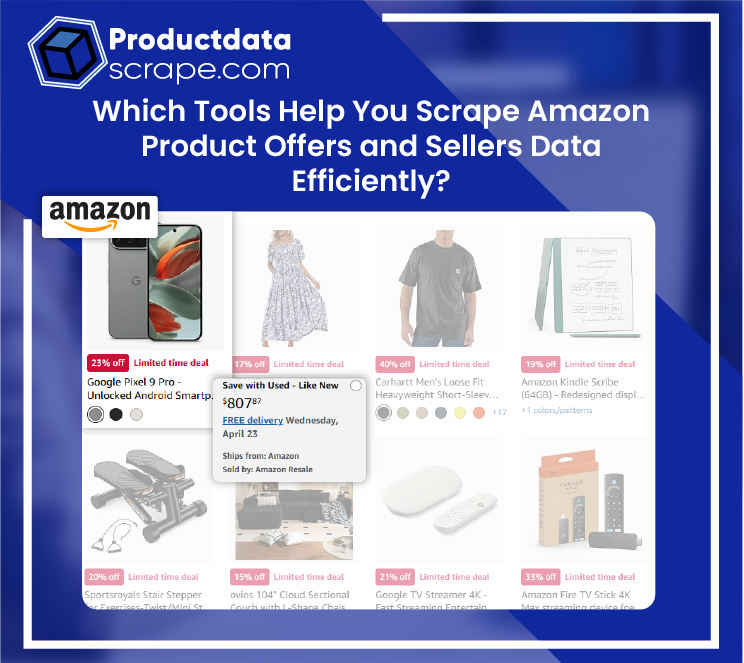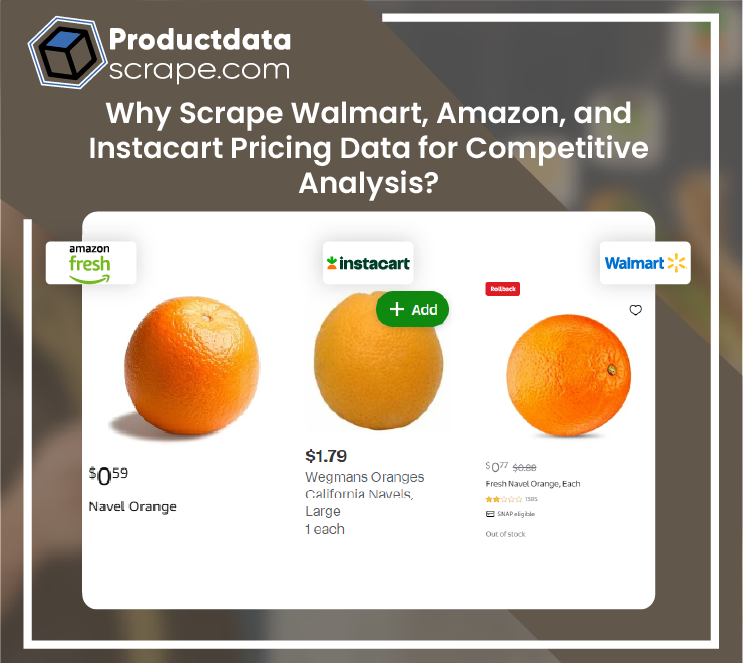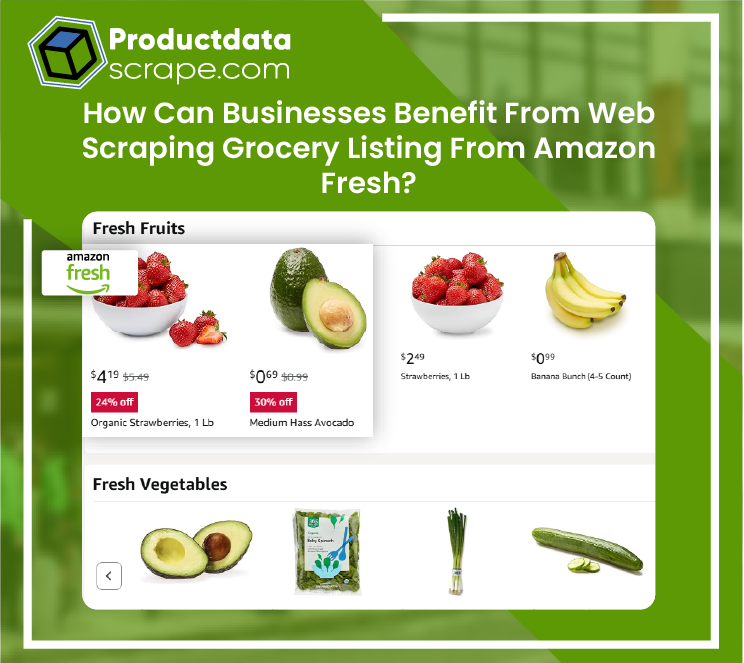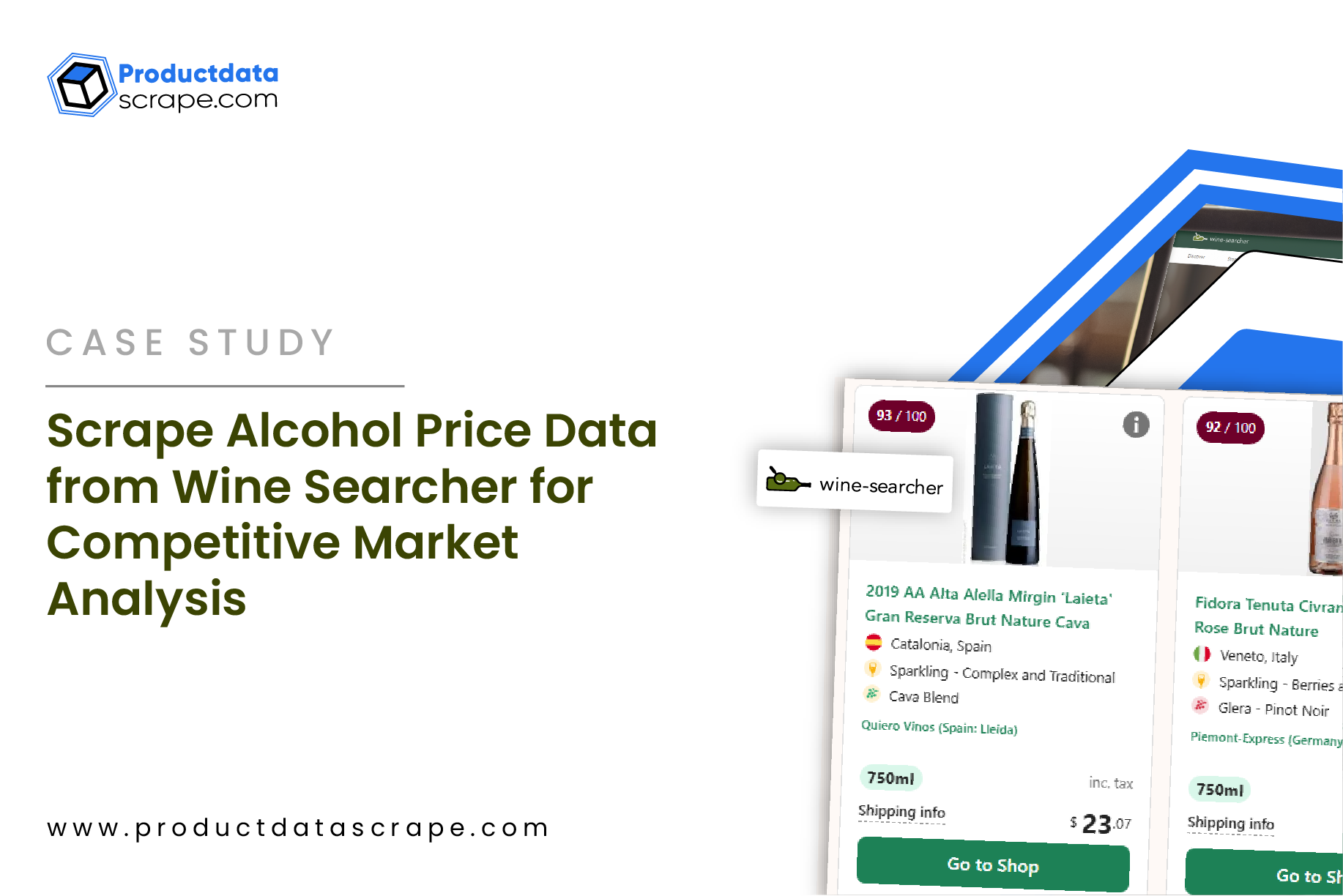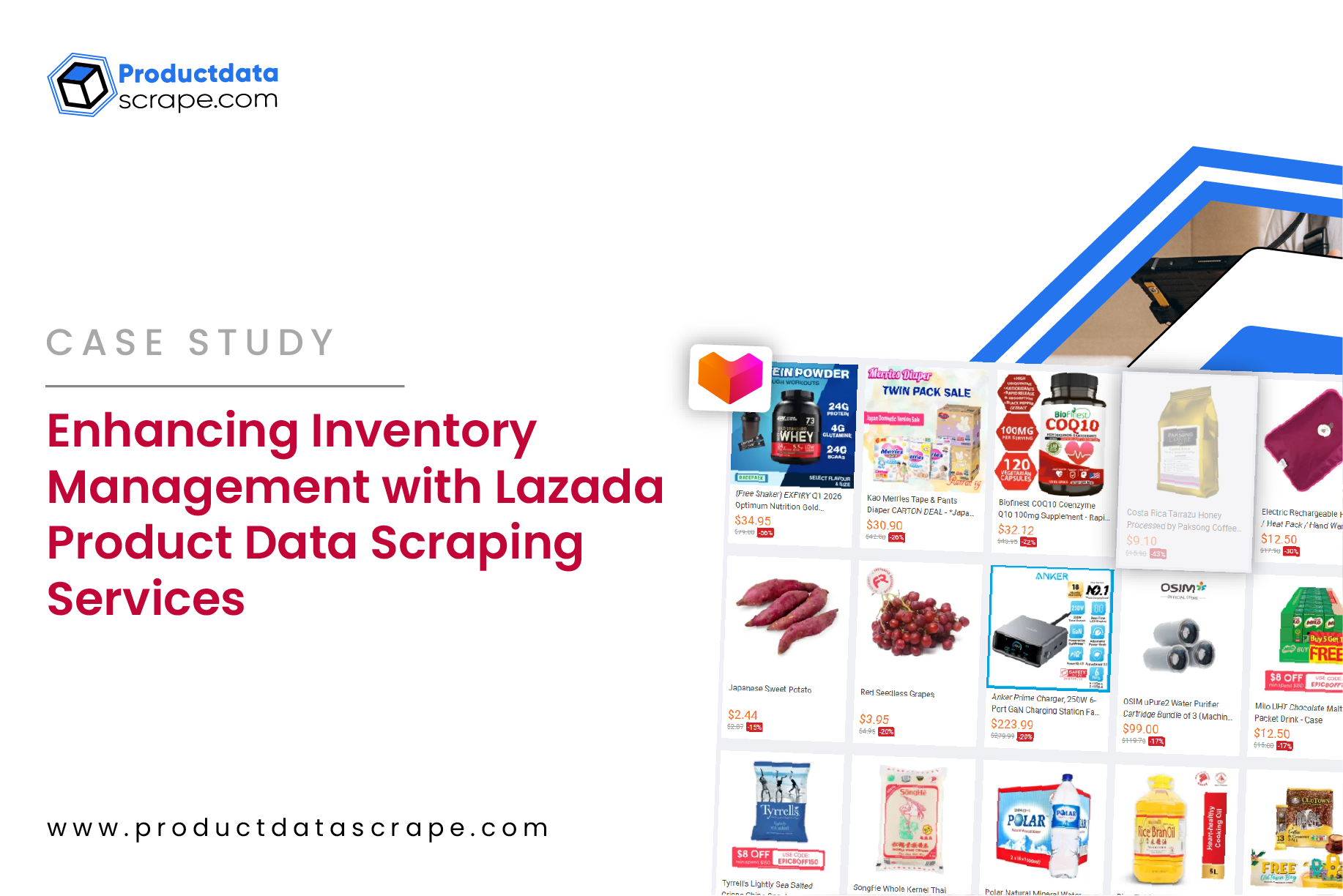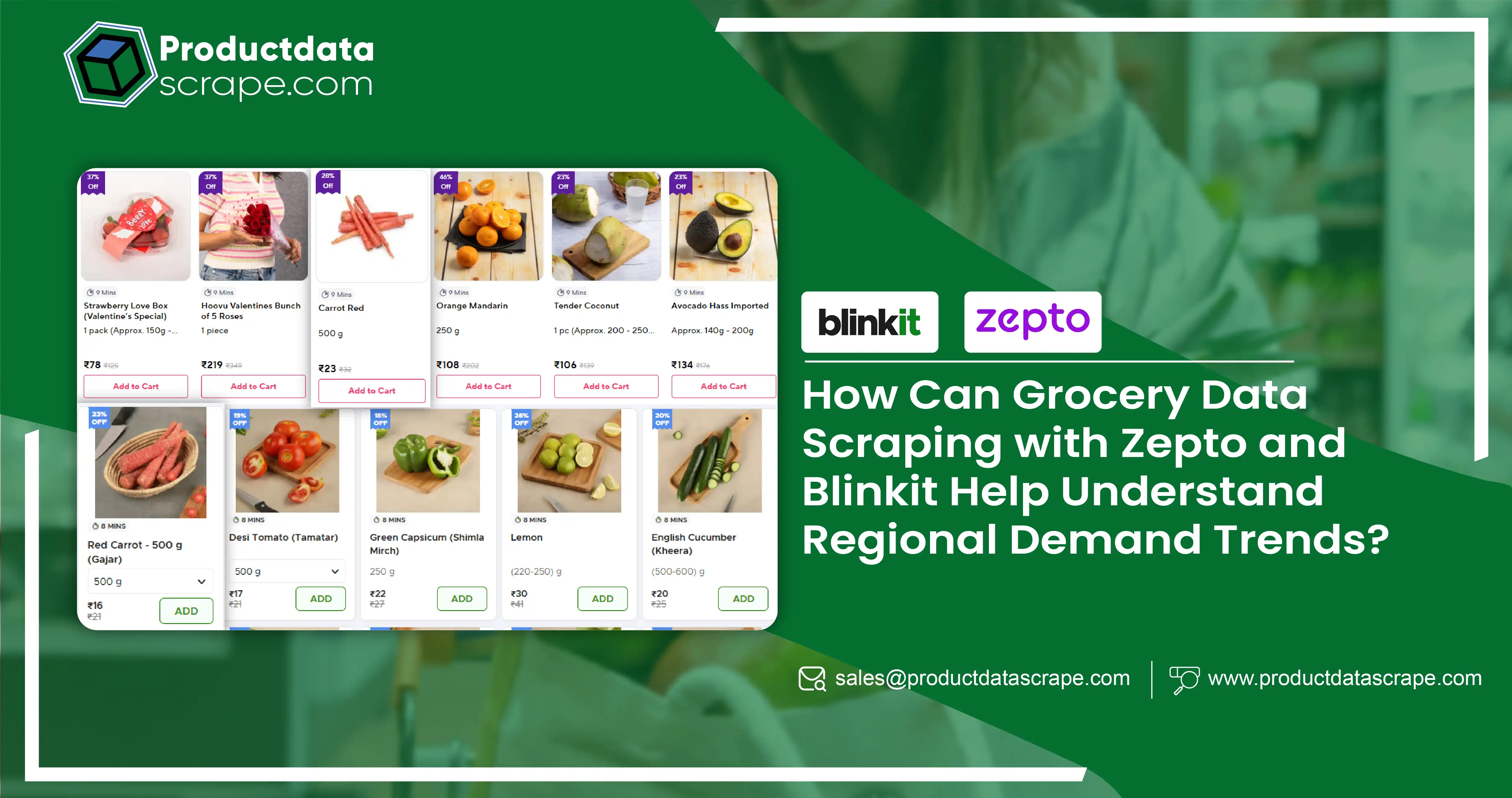
Introduction
Quick commerce (Q-commerce) has revolutionized how consumers engage with grocery
delivery platforms in recent years. Zepto and Blinkit, two leaders in this industry, have become
household names due to their ability to offer speedy delivery times, typically within 10 to 30
minutes. Grocery Data Scraping with Zepto and Blinkit helps businesses gain critical insights
into customer preferences, behaviors, and regional demand trends. This data is a game-
changer, allowing businesses to make informed decisions about inventory management, pricing
strategies, and customer targeting, all essential for thriving in a highly competitive market. With
the ability to Scrape Regional Demand in Zepto and Blinkit Data, businesses can fine-tune their
offerings and respond quickly to emerging trends. Furthermore, leveraging E-grocery Regional
Insights allows for better market penetration and more effective resource allocation in various
regions.
The Power of Regional Demand Trends in Q-Commerce
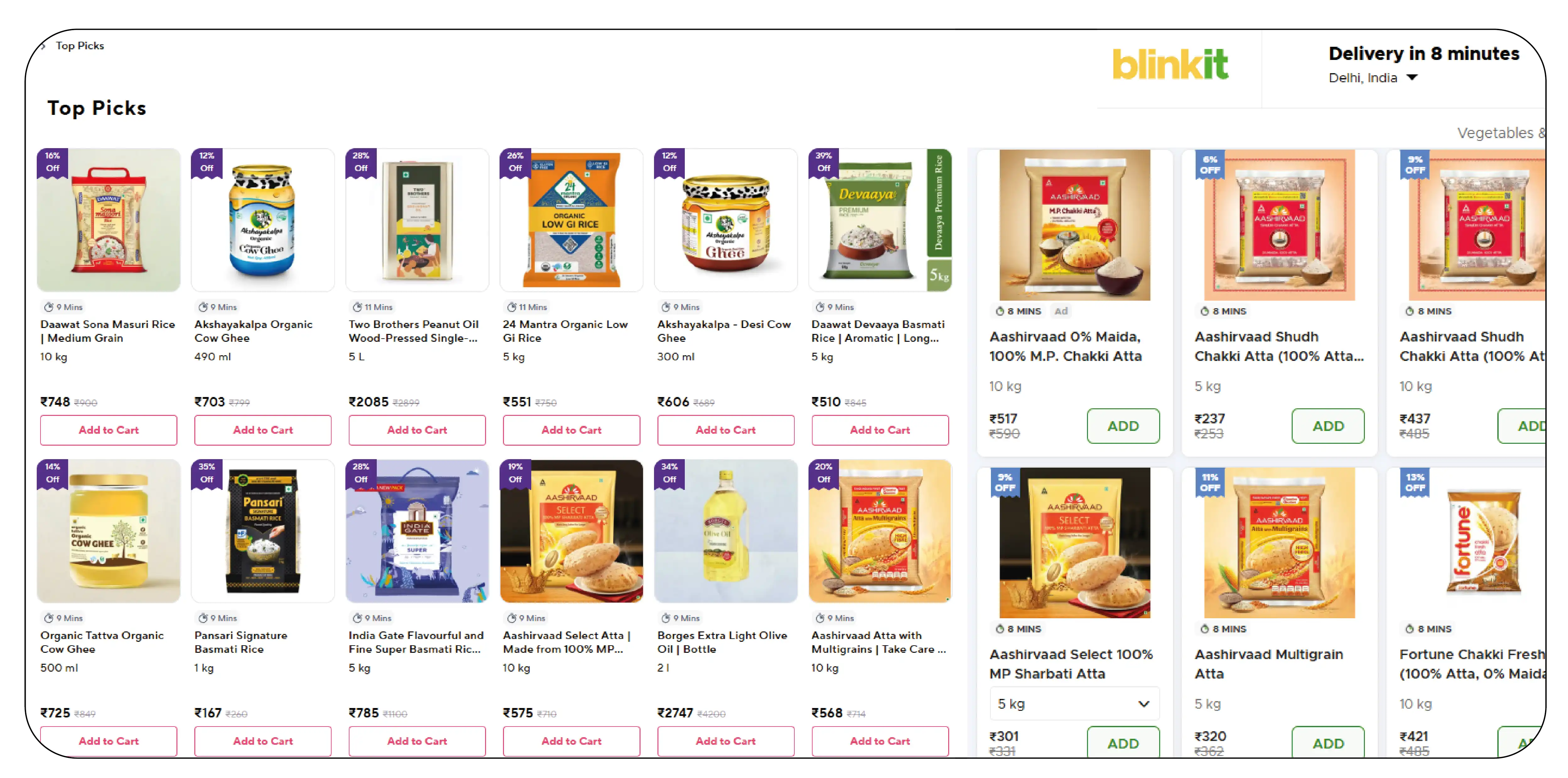
The grocery delivery landscape in India and elsewhere is becoming increasingly competitive. With players like Zepto and Blinkit leading the charge, understanding regional demand trends has never been more critical. This knowledge allows platforms to adjust to the specific needs of different regions, optimizing everything from inventory and product offerings to marketing and pricing strategies.
Consumers' demands for groceries are not static; they vary based on various factors, including seasonality, cultural preferences, local economic conditions, and even the time of day or week. Additionally, socio-economic factors such as income levels, urbanization, and local cultural practices contribute to regional differences. These variances are critical for grocery platforms that want to cater to their customers' unique preferences.
Blinkit Grocery Data Scraping allows companies to capture real-time insights into these regional fluctuations in demand. By analyzing the data they scrape from these platforms, they can understand what customers in different regions are purchasing, when, and at what price points. This enables the platforms to offer customers more localized, relevant, and appealing options while ensuring operational efficiencies. Moreover, with Zepto Demand Trends Scraping, businesses gain deeper insights into regional purchasing behaviors, empowering them to fine-tune their services further. By using these techniques to Extract Online Grocery Trends in India, platforms can ensure they stay ahead of the curve in catering to the dynamic needs of diverse markets.
How Businesses Leverage Zepto and Blinkit Data Scraping for Regional Demand Analysis?
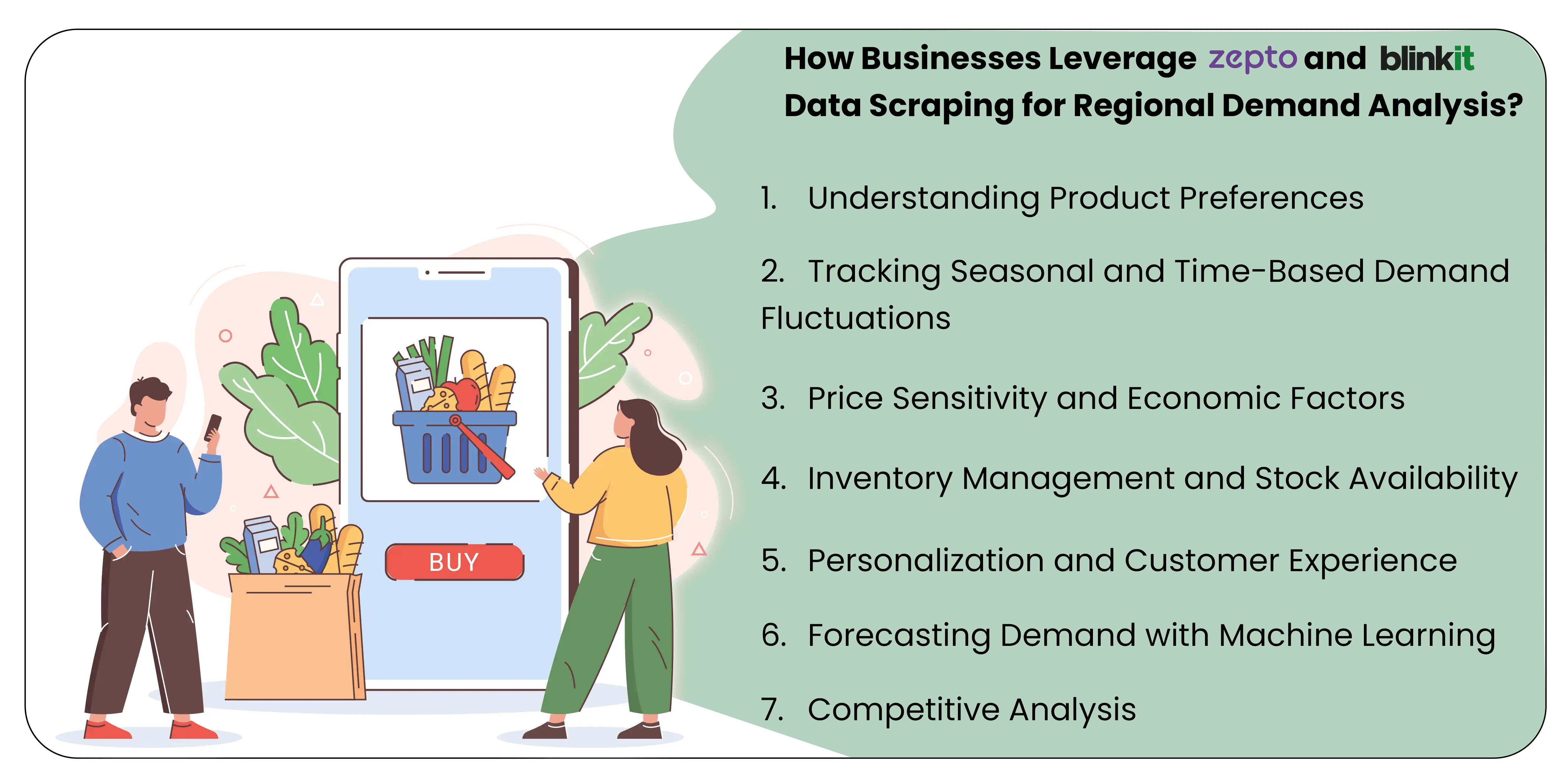
1. Understanding Product Preferences: One of the most immediate and valuable insights
businesses gain through data scraping is understanding product preferences in specific
regions. Customer preferences for grocery items can differ drastically depending on
location. For example, consumers in urban areas may show a higher demand for organic
products, ready-to-eat meals, or gourmet items. At the same time, rural regions may
prioritize staples such as rice, wheat flour, and fresh vegetables. Companies use data
scraping techniques to track which products are bought the most in different regions,
enabling them to tailor their inventory and product offerings accordingly.
For instance, if a region demonstrates a higher demand for organic food, companies can
stock more products in local warehouses and even push promotional offers around
them. On the other hand, if a region favors traditional products, they can focus on
stocking more regional staples, further strengthening their customer base. This level of
personalization helps platforms increase their appeal and connect with local customers
on a deeper level. By leveraging the ability to Scrape Real-time Grocery Demand from
Blinkit, they can ensure that their stock aligns with current consumer trends, providing
timely and relevant options to meet customer needs.
2. Tracking Seasonal and Time-Based Demand Fluctuations: Data scraping allows
companies to monitor demand fluctuations based on the time of day, the week, or the
season. Certain grocery items may experience spikes in demand during festivals,
holidays, or other regional events. For instance, products like chocolates, snacks, and
beverages may see a sharp rise in demand during festivals, while fresh produce may
peak during summer.
By scraping data on past purchases, they can predict which products will be in demand
at specific times of the year. This helps them optimize inventory levels, ensuring they
have enough stock of high-demand products while avoiding overstocking items unlikely
to sell in a particular period. This precise forecasting and demand planning are critical
for platforms that want to maintain a seamless customer experience, especially when
dealing with fast delivery timelines. Businesses scrape Real-Time Grocery Demand from
Blinkit to meet fluctuating customer needs during peak periods.
3. Price Sensitivity and Economic Factors:Another critical component of regional demand
is how sensitive customers are to pricing. Economic factors such as regional income
levels, affordability, and competition all shape customers' purchasing behavior. By
scraping data, companies can gain valuable insights into how different regions react to
pricing strategies.
For instance, in higher-income areas, customers may be more willing to pay a premium
for convenience, faster delivery, and higher-quality products. In contrast, customers
may be more responsive to discounts, promotions, or bundled deals in more price-
sensitive regions. Blinkit Data Scraper helps track regional price fluctuations and tailor
pricing strategies accordingly.
Additionally, competitive pricing can be tracked through data scraping, allowing them to
stay ahead of the competition in each region. If a competitor offers a better price on
certain products, the platforms can adjust their prices or offer additional promotions to
stay competitive.
4. Inventory Management and Stock Availability: Inventory management is one of the
most important challenges for Q-commerce platforms. Given the industry's fast-paced
nature, it's crucial to ensure that high-demand products are always in stock while
avoiding excess inventory that leads to wastage or additional storage costs.
Through data scraping, businesses gain visibility into which products are selling well in
particular regions, which helps them forecast future demand more accurately. By
monitoring stock levels and analyzing trends, they can predict when to replenish
popular product inventory or phase out slow-moving items. Moreover, by identifying
local demand for specific products, they can ensure that regional fulfillment centers are
stocked appropriately, thus reducing delivery times and ensuring a smooth operation.
Zepto Data Scraper is key in enabling accurate forecasting and timely inventory
replenishment.
5. Personalization and Customer Experience: A key differentiator for Zepto and Blinkit is
their ability to provide personalized experiences for customers. Data scraping helps
businesses understand individual preferences and purchasing habits. By analyzing this
data, they can recommend products to customers based on past purchases, region-
specific trends, and even the time of day. This level of personalization not only enhances
the user experience but also drives customer loyalty.
For example, if a customer frequently buys organic produce, the platform can send
personalized notifications about new organic products available in their area. Similarly,
Zepto or Blinkit can offer customized discounts or bundles if customers regularly
purchase packaged snacks. Personalization, made possible through data scraping, is key
to retaining customers and ensuring high satisfaction.
The ability to integrate Regional Demand Trends in Zepto and Blinkit Grocery Data
scraping provides further depth to these personalization strategies, offering targeted
recommendations based on regional purchasing habits.
6. Forecasting Demand with Machine Learning: The data scraped from Zepto and Blinkit
doesn't provide insights into today's demand and serves as a rich dataset for predicting
future trends. By integrating machine learning (ML) algorithms with data scraping
processes, companies can uncover hidden patterns in customer behavior, making their
demand forecasts more accurate.
Machine learning can analyze past data and predict future demand for specific products
in certain regions. These models can also detect emerging trends, such as new product
categories gaining popularity or changes in customer preferences driven by external
factors. By utilizing data scraping in conjunction with machine learning, businesses can
stay ahead of the curve and adjust their strategies proactively, ensuring they can meet
future customer demands while staying competitive.
For example, Web Scraping Grocery & Gourmet Food Data helps capture detailed
insights into emerging consumer trends and adjust their inventory accordingly.
7. Competitive Analysis:In a market with multiple players, data scraping doesn't just help
businesses understand their own customers—it also gives them a competitive edge. By
scraping competitor data, businesses can gain insights into their rivals' product
offerings, pricing strategies, promotions, and customer engagement tactics. This allows
them to identify market gaps, adjust their offerings, and ensure that they remain
competitive in each region.
For example, companies can track these pricing strategies through data scraping and
adjust their offerings if a competitor offers heavy discounts on specific categories in
certain regions. This real-time competitor analysis allows them to be more agile and
responsive to market shifts. By leveraging Zepto data scraper, they can continuously
monitor the competitive landscape and make data-driven decisions to stay ahead.
Conclusion
In the fast-paced world of Q-commerce, understanding regional demand trends is essential for
success. This article shows how data scraping can be leveraged to gain deep insights into
regional customer preferences, demand fluctuations, pricing sensitivity, and inventory
requirements. By scraping and analyzing data, these platforms can make data-driven decisions
that help them optimize product offerings, fine-tune pricing strategies, and improve
operational efficiencies.
Data scraping also enables businesses to stay ahead of emerging trends and anticipate
customer needs, giving them a competitive advantage in an increasingly crowded market.
Whether tracking product preferences, adjusting prices based on regional economic conditions,
or forecasting demand with machine learning, grocery data scraping empowers these platforms
to provide customers with a more personalized, efficient, and competitive service. As the Q-
commerce sector continues to grow, the ability to scrape and analyze regional demand data will
remain a critical tool for businesses striving to stay at the forefront of the industry.
At Product Data Scrape, we strongly emphasize ethical practices across all our services, including Competitor Price Monitoring and Mobile App Data Scraping. Our commitment to transparency and integrity is at the heart of everything we do. With a global presence and a focus on personalized solutions, we aim to exceed client expectations and drive success in data analytics. Our dedication to ethical principles ensures that our operations are both responsible and effective.




